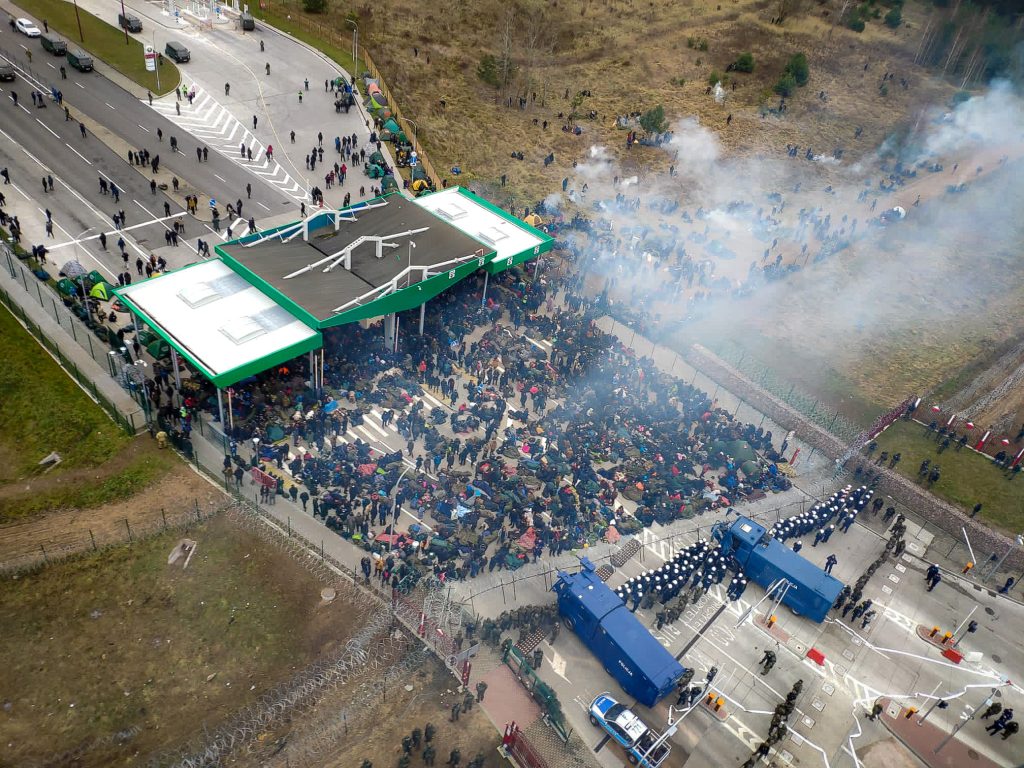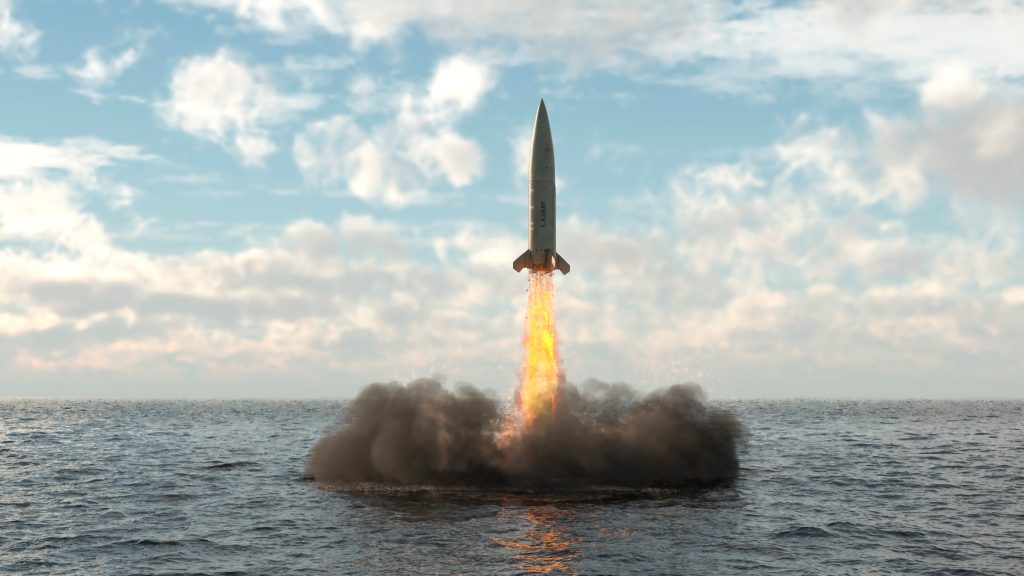Home > Taiwan: a technological battlefield
Taipei, Taiwan, 2-3 August 2022. A surprise visit by the Speaker of the US House of Representatives Nancy Pelosi took place and the news reverberated across the Asia-Pacific[1]. Beijing reacted sharply by deploying ships and aircraft around Taiwan on 4 August as "large-scale aero-naval exercises", including ballistic missile launches[2]. Numerous Chinese military drones (BZK-007) have entered the island's Air Defence Identification Zone (ADIZ)[3]. Several Chinese aircraft have crossed the median line of the Taiwan Strait[4]. On 20 August alone, the Taiwanese Ministry of Defence reported 17 warplanes and 5 Chinese army vessels in the vicinity of the island[5]. Also, according to the ministry, seven of the 17 aircraft (two Xi'an JH-7 bombers, two Sukhoi-30s, two Shenyang J-11s and a Shaanxi Y-8 anti-submarine aircraft) crossed the median line separating China and Taiwan in the Strait, or ventured into the southwestern sector of Taiwan's Air Defence Identification Zone (ADZ)[6]. According to a database compiled by AFP from Taiwanese military reports, there were some 446 air incursions by Chinese warplanes into Taiwan in August, and 1,100 since the beginning of the year[7].
However, these Chinese reactions are nothing new. Since the advent of the People's Republic of China and the exile of Chiang Kai-Shek to Taiwan in 1949, the question of the island has been a bone of contention between Beijing and Taipei.[8]. The former considers Taiwan as its province, while the Taiwanese want to keep their independence, in opposition to the "one China principle" (One China principle)[9].
Second, although Western countries (with the exception of the Vatican) no longer have embassies in Taipei, they have maintained and increased their contacts with Taiwanese officials[10].
As early as 1979, despite Washington's recognition of China, the United States ratified the Taiwan Relations Act (TRA), through which they committed to supply Taiwan with sufficient arms to enable it to defend itself in the event of military aggression[11]and this commitment still exists today[12]. President Ronald Reagan's Six Assurances (1982) also characterise the US commitment to Taiwan[13]. They are: (1) not to set a date for the cessation of arms deliveries to Taiwan; (2) not to consult Beijing on arms sales to Taiwan; (3) not to mediate between Taipei and Beijing; (4) not to revise the terms of the TRA; (5) not to change its position on the issue of Taiwan's sovereignty; and finally, (6) not to put pressure on Taipei to open negotiations with Beijing[14].
On 2 September, the US government authorised three new arms sales to Taiwan totalling US$1.1 billion, which include logistical support for the radar surveillance programme and related equipment, including 60 AGM-84L-1 Harpoon Block II missiles, and 100 AIM-9X Sidewinder Block II missiles[15]. According to the Taiwanese Foreign Ministry, this is the fifth announcement of arms sales to Taiwan by the Biden administration this year, and the sixth since the US president's inauguration in January 2021[16].
In addition to Pelosi and other US lawmakers[17]Japanese officials[18]and some European representatives (Lithuanian, Czech and Slovak) have also made recent visits to Taipei[19]As was the case for the French recently (7-8 September)[20]. Canadians prepare for October 2022 for a future parliamentary visit[21]. Beijing takes a dim view of these deepening relations[22].
Indeed, in addition to the South China Sea (Paracels and Spratlys), Beijing claims several islands along its eastern coast: apart from Taiwan, these include the Japanese islands of Senkaku[23]. This causes concern in Tokyo and even in Washington, because of its military bases in the region (Okinawa in Japan)[24].
However, Taiwan is the object of covetousness for both Beijing and Washington, not only because of its strategic location (Taiwan Strait), but also because of its industrial potential (ultra hi-tech factories) and its technological heritage (production of semiconductors)[25].
Taiwan's semiconductor industry, which is essential for the manufacture of high-tech products (telephones, aircraft, solar panels, etc.) and crucial to the world economy, accounts for a large proportion of world production (63 %)[26]. Taiwanese factories are capable of engraving large-scale chips with a precision of 3 nanometres (3 millionths of a millimetre), which are sold worldwide and equip our cars, trains, planes, refrigerators, telephones (90% of the latest generations of smartphones, all brands included).[27] Whether Asian, European or American, the biggest brands have become ultra-dependent on these Taiwanese semiconductors[28]. The most advanced semiconductors are largely manufactured by the Taiwan Semiconductor Manufacturing Company (TSMC) (the world's largest semiconductor company)[29].
Foxconn, one of Taiwan's largest technology companies, is Apple's main electronics supplier and assembles its iPhone[30]. Also China's largest private employer, Foxconn is under pressure from Taiwanese authorities to abandon an $800 million investment in Chinese chipmaker Tsinghua Unigroup[31]. Behind this pressure is a fear on the part of the authorities that a strengthened Chinese company will help China achieve its technological ambitions in its long-distance battle with the United States, especially as the Chinese investment company WiseRoad Capital, with close ties to the Beijing government, is named in the investment agreement alongside Foxconn[32]. Indeed, the United States is seeking to reduce its dependence on China, and in early August 2022, Joe Biden signed a bill entitled CHIPS and Science Act, which is releasing $52 billion in subsidies to boost semiconductor production in the US[33].
In addition to being a world leader in chip (or semiconductor) production, Taiwan also remains a strategic location that Beijing still seeks to control: the Taiwan Strait, 130 km wide between the People's Republic of China and the island of Taiwan, is also an important trade route between the South and East China Seas[34]The main reason for this is that it is used for cargo ships connecting China, Japan, South Korea and Taiwan with the West.[35]. According to data compiled by Bloomberg, nearly half of the world's container fleet, or 48 % of the world's 5,400 operational container ships, and 88% of the world's largest ships by tonnage passed through the Strait this year[36].
The island still has the advantage of direct access to the deep ocean on its eastern shores, which would allow China to build a new ballistic missile submarine (SSBN) base and move closer to the US coast[37].
Nevertheless, despite the threats of open war, economic and political actors are working to avoid an escalation for fear of paralysing the global economy[38]. However, to ensure security and stability of supply as well as to respond to Chinese influence, the Indo-Pacific Economic Framework initiative was launched during Biden's visit to Japan last May, and a summit involving 14 countries (in addition to the US and Japan, Australia, Brunei, Fiji, India, Indonesia, Malaysia, New Zealand, the Philippines, Singapore, South Korea, Thailand and Vietnam) began on 8 September in Los Angeles.[39].
Finally, the possible meeting of US President Joe Biden and Chinese President Xi Jinping at the G20 in Bali, Indonesia, in November 2022[40]This is the first time that the European Union has been involved in the development of the Taiwanese economy, which could shed more light on the fate of Taiwan, and indeed of the Asia-Pacific region, in the years to come...
All rights reserved by BRAUN



